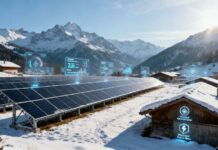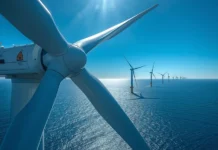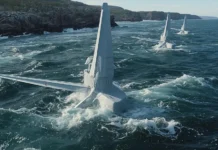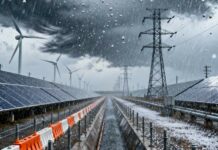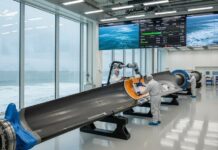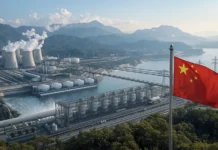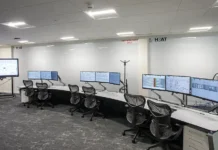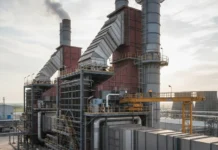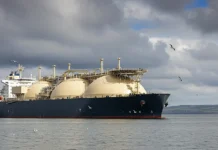Digital Twins for Power Plants: Transforming Efficiency and Resilience
The power generation industry stands at a technological crossroads where digital transformation meets operational excellence. Among the most revolutionary technologies reshaping this landscape are digital twins for power plants, which are fundamentally altering how energy facilities operate, maintain equipment, and optimize performance. This virtual replication technology creates real-time digital replicas of physical assets, enabling unprecedented levels of operational insight and predictive capability.
Digital twin technology represents far more than simple monitoring systems. These sophisticated platforms combine real-time data from Internet of Things (IoT) sensors, advanced analytics, artificial intelligence, and physics-based modeling to create comprehensive virtual environments that mirror every aspect of power plant operations. The global digital twin market reached approximately $13.42 billion in 2024 and projects explosive growth to $110.1 billion by 2028, with the power generation sector driving significant adoption.
The Architecture of Digital Twin Technology
Digital twin technology operates through a sophisticated integration of multiple technological components working in harmony. The foundation begins with extensive sensor networks throughout power plants, capturing temperature, vibration, pressure, flow rates, and emissions data from every critical component. These sensors generate continuous streams of operational data that feed into advanced data infrastructure platforms built on cloud computing and edge processing architectures.
The core intelligence lies in simulation models that combine physics-based calculations with data-driven machine learning algorithms. These models recreate real-world conditions from combustion dynamics in boilers to thermal management in cooling systems. Advanced analytics engines powered by artificial intelligence process this information to detect patterns, forecast anomalies, and recommend optimal operational adjustments.
Visualization interfaces provide operators and engineers with intuitive dashboards displaying real-time insights and predictive analytics. These systems transform complex technical data into actionable information that supports informed decision-making across all operational levels.
Transforming Predictive Maintenance Strategies
Traditional maintenance approaches in power generation have relied on scheduled interventions or reactive responses to equipment failures. Digital twins for power plants revolutionize this paradigm by enabling truly predictive maintenance capabilities that can reduce unplanned downtime by up to 20% while extending machinery lifespan by 25%.
The technology continuously monitors virtual models against real-time operational data, identifying subtle deviations that indicate potential equipment issues before they manifest as failures. Machine learning algorithms within digital twins analyze historical patterns and current conditions to predict component lifecycles with remarkable accuracy.
Gas turbines, among the most critical and expensive components in power generation facilities, benefit tremendously from digital twin monitoring. These systems model thermodynamic operations under varying load conditions, enabling engineers to optimize performance for maximum efficiency and equipment longevity. Companies like Siemens Energy employ digital twins specifically to minimize turbine unplanned outages while optimizing heat rates across different operating scenarios.
The predictive capabilities extend beyond individual components to system-wide performance optimization. Digital twins can simulate cascading effects of component degradation, helping maintenance teams prioritize interventions based on overall plant reliability rather than isolated equipment concerns.
Operational Optimization and Performance Enhancement
Power plant efficiency reaches new heights through digital twin implementation, as these systems enable real-time scenario testing without risking actual plant performance. Operators can experiment with different fuel blends, load management strategies, and operational parameters within the virtual environment, projecting outcomes before implementing changes.
The technology excels at energy optimisation by continuously analyzing combustion efficiency, heat transfer rates, and power output optimization. Digital twins can simulate various operating conditions and provide insights into the most efficient operational approaches for current market demands and environmental conditions.
Fuel consumption optimization represents one of the most significant economic benefits. Digital twins analyze combustion processes in real-time, adjusting air-to-fuel ratios, combustion timing, and temperature profiles to maximize energy output while minimizing fuel usage and emissions. This optimization can result in measurable improvements in plant efficiency ratings and substantial cost savings over time.
Load forecasting and dispatch optimization benefit enormously from digital twin analytics. These systems can predict optimal generation schedules based on electricity market conditions, renewable energy availability, and plant efficiency characteristics, ensuring maximum economic performance while maintaining grid stability requirements.
Industrial Digitalisation and Smart Power Systems
The implementation of digital twins accelerates broader industrial digitalisation initiatives across power generation facilities. These systems integrate seamlessly with existing plant control systems, enterprise resource planning platforms, and grid management infrastructure to create comprehensive smart power systems.
Real-time data integration enables digital twins to coordinate with smart grid technologies, automatically adjusting power output based on grid demands and renewable energy fluctuations. This coordination supports grid stability while optimizing plant profitability through dynamic dispatch strategies.
Digital twins facilitate remote monitoring and control capabilities, enabling expert engineers to oversee multiple facilities from centralized locations. This approach reduces operational costs while ensuring consistent high-level expertise across all facilities within a power generation portfolio.
The technology also supports regulatory compliance and environmental reporting by continuously monitoring emissions, efficiency metrics, and operational parameters. Automated reporting capabilities ensure accurate documentation for regulatory authorities while identifying optimization opportunities for environmental performance improvements.
Integration with Renewable Energy Systems
Modern smart energy solutions increasingly require flexible operation to accommodate variable renewable energy sources. Digital twins enable conventional power plants to operate as flexible grid resources, rapidly adjusting output to complement solar and wind generation patterns.
The technology models plant startup and shutdown procedures with exceptional precision, enabling rapid response capabilities that support grid stability during renewable energy fluctuations. Digital twins can optimize ramping rates and minimize startup emissions while ensuring reliable backup power availability.
Combined cycle gas turbines benefit particularly from digital twin optimization when operating as renewable energy backup systems. These platforms can model optimal switching between single-cycle and combined-cycle operations based on grid demands and renewable energy forecasts.
Advanced Data Analytics and Artificial Intelligence
Data-driven power systems powered by digital twins leverage sophisticated artificial intelligence algorithms to extract actionable insights from massive operational datasets. Machine learning models continuously improve prediction accuracy by analyzing historical performance patterns and correlating them with current operational conditions.
Anomaly detection algorithms within digital twins can identify subtle performance deviations that human operators might miss. These systems learn normal operational patterns and flag unusual behaviors that could indicate developing problems or optimization opportunities.
Optimization algorithms automatically adjust operational parameters to maintain peak performance under changing conditions. These systems can balance multiple objectives simultaneously, such as maximizing efficiency while minimizing emissions and maintaining equipment longevity.
Economic Benefits and Return on Investment
The financial impact of implementing digital twins for power plants extends far beyond immediate operational savings. Reduced maintenance costs through predictive strategies can decrease total maintenance expenditures by 15-25% while improving plant availability factors.
Extended equipment lifespans result from optimized operating conditions and proactive maintenance interventions. Digital twins help operators avoid conditions that accelerate component wear, potentially extending major equipment lifecycles by several years.
Improved fuel efficiency translates directly to reduced operational costs and enhanced competitive positioning in electricity markets. Even modest efficiency improvements can generate substantial savings given the scale of fuel consumption in power generation.
Enhanced grid services capabilities enabled by digital twin optimization can create additional revenue streams through ancillary service provision, frequency regulation, and capacity market participation.
Implementation Challenges and Solutions
Successful digital twin deployment requires careful attention to data integration challenges, particularly in facilities with legacy control systems. Modern implementations address these challenges through flexible data acquisition systems that can interface with existing equipment while providing pathways for future upgrades.
Cybersecurity considerations become paramount when implementing connected digital systems in critical infrastructure. Robust security frameworks must protect digital twin platforms while maintaining operational functionality and real-time performance requirements.
Staff training and change management represent crucial success factors for digital twin implementation. Organizations must develop comprehensive training programs that help operations personnel effectively utilize new analytical capabilities while maintaining confidence in traditional operational expertise.
Future Developments and Emerging Capabilities
The evolution of digital twin technology continues advancing toward even more sophisticated capabilities. Future developments include enhanced physics-based modeling that incorporates advanced computational fluid dynamics for improved combustion optimization and heat transfer analysis.
Integration with artificial intelligence continues expanding, with next-generation systems featuring autonomous optimization capabilities that can adjust plant operations without human intervention while maintaining safety and reliability standards.
Enhanced visualization technologies including virtual and augmented reality interfaces will provide immersive operational experiences that help engineers better understand complex system interactions and optimize performance strategies.
Environmental Impact and Sustainability
Digital twins contribute significantly to environmental sustainability goals by optimizing plant operations for reduced emissions and improved efficiency. Emission reduction capabilities include precise control of combustion processes to minimize nitrogen oxides, particulate matter, and carbon dioxide emissions.
The technology supports transition planning for renewable energy integration, helping conventional power plants operate more efficiently as backup systems while reducing overall environmental impact during the clean energy transition.
Water usage optimization through digital twin monitoring helps power plants reduce cooling water consumption and thermal discharge impacts, supporting environmental stewardship while maintaining operational performance.
Digital twins for power plants represent a transformative technology that delivers measurable improvements in efficiency, reliability, and environmental performance. As the power generation industry continues evolving toward cleaner, more flexible operations, digital twin implementation will become increasingly essential for competitive success. The technology’s ability to optimize complex systems while predicting maintenance needs and enhancing operational decision-making positions it as a cornerstone of modern smart energy solutions that will define the future of power generation excellence.
Key Takeaways:
- Digital twins reduce unplanned downtime by up to 20% and extend equipment life by 25%
- Real-time optimization capabilities improve fuel efficiency and reduce emissions
- Predictive maintenance strategies decrease maintenance costs by 15-25%
- Integration with smart grid systems enhances flexibility and grid services capabilities
- Advanced AI and machine learning continuously improve operational predictions and optimization




